Usuario "rmartinez"
Se han encontrado 12 Coincidencias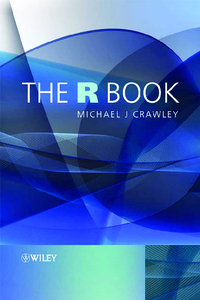
The R Book
Estadística computacional
207 Visitas | 249 Descargas | 2013-10-01 03:27:09 | rmartinez
The high-level language of R is recognized as one of the most powerful and flexible statistical software environments, and is rapidly becoming the standard setting for quantitative analysis, statistics and graphics. R provides free access to unrivalled coverage and cutting-edge applications, enabling the user to apply numerous statistical methods ranging from simple regression to time series or multivariate analysis. Building on the success of the author’s bestselling Statistics: An Introduction using R, The R Book is packed with worked examples, providing an all inclusive guide to R, ideal for novice and more accomplished users alike. The book assumes no background in statistics or computing and introduces the advantages of the R environment, detailing its applications in a wide range of disciplines. Provides the first comprehensive reference manual for the R language, including practical guidance and full coverage of the graphics facilities. Introduces all the statistical models covered by R, beginning with simple classical tests such as chi-square and t-test. Proceeds to examine more advance methods, from regression and analysis of variance, through to generalized linear models, generalized mixed models, time series, spatial statistics, multivariate statistics and much more. The R Book is aimed at undergraduates, postgraduates and professionals in science, engineering and medicine. It is also ideal for students and professionals in statistics, economics, geography and the social sciences.
Programming in Objective-C (4th Edition)
127 Visitas | 192 Descargas | 2013-10-01 03:53:33 | rmartinez
This is the 4th edition of the world's bestselling book on Objective-C programming, fully updated to cover Xcode 4.2 and Automatic Reference Counting (ARC). Programming in Objective-C is a concise, carefully written tutorial on the basics of Objective-C and object-oriented programming for Apple's iOS and Mac platforms. The book makes no assumptions about prior experience with object-oriented programming languages or with the C language (which Objective-C is based upon). Because of this, both beginners and experienced programmers alike can use this book to quickly and effectively learn the fundamentals of Objective-C. Readers can also learn the concepts of object-oriented programming without having to first learn all of the intricacies of the underlying C programming language. This unique approach to learning, combined with many small program examples and exercises at the end of each chapter, makes Programming in Objective-C ideally suited for either classroom use or self-study. This edition has been fully updated for the significant changes in iOS 5 and Xcode 4.2. One of the biggest changes is Automatic Reference Counting (ARC). This edition gives detailed coverage of how to use ARC to improve and simplify memory management in Objective-C programs.
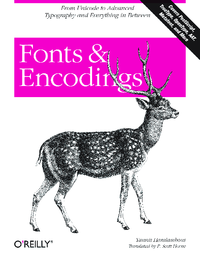
Fonts and Encodings
Tipografía digital
108 Visitas | 210 Descargas | 2013-10-01 05:41:58 | rmartinez
This reference is a fascinating and complete guide to using fonts and typography on the Web and across variety of operating systems and application software. Fonts and Encodings shows you how to take full advantage of the incredible number of typographic options available, with advanced material that covers everything from designing glypsh to developing software that creates and processes fonts. The era of ASCII characters on green screens is long gone, and industry leaders such as Apple, HP, IBM, Microsoft, and Oracle have adopted Unicode Worldwide Character Standard. This only solves part of the problem, as a multitude of font standards and tools remain between the numeric character codes and their presentation. This book explores how those pieces fit together. Yannis Haralambous was born in Athens (Greece) in 1962. He moved to France in 1979 to study at the Université de Lille I, where in 1990 he completed his doctoral dissertation in pure mathe- matics. After a brief period at INALCO and several years of self-employment, in 2001 he joined the faculty of ENST Bretagne, in Brest (Brittany), where he teaches computer science. He does his research in the fields of digital typography (especially for the languages of East Asia), internation- alization, and the electronic book. He has been the co-developer of Omega, a successor to TeX, now merged into the very promising luaTeX.
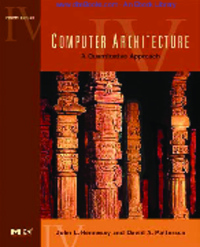
Computer Architecture : A Quantitative Approach
153 Visitas | 193 Descargas | 2013-10-02 04:52:22 | rmartinez
“Computer Architecture builds on fundamentals that yielded the RISC revolution, including the enablers for CISC translation. Now, in this new edition, it clearly explains and gives insight into the latest microarchitecture techniques needed for the new generation of multithreaded multicore processors.” —Marc Tremblay, Fellow & VP, Chief Architect, Sun Microsystems
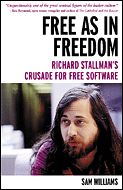
Free as in Freedom. Richard Stallman's Crusade for Free Software
121 Visitas | 193 Descargas | 2013-10-03 03:41:39 | rmartinez
The work of Richard M. Stallman literally speaks for itself. From the documented source code to the published papers to the recorded speeches, few people have expressed as much willingness to lay their thoughts and their work on the line. Such openness ---if one can pardon a momentary un-Stallman adjective--- is refreshing. After all, we live in a society that treats information, especially personal information, as a valuable commodity. The question quickly arises. Why would anybody want to part with so much information and yet appear to demand nothing in return? As we shall see in later chapters, Stallman does not part with his words or his work altruistically. Every program, speech, and on-the-record bon mot comes with a price, albeit not the kind of price most people are used to paying.
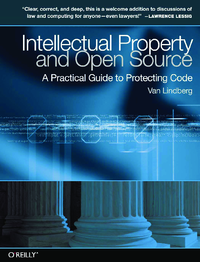
Intellectual Property and Open Source
87 Visitas | 173 Descargas | 2013-10-03 03:53:30 | rmartinez
This book is about a tool that we use called intellectual property—IP for short. We use IP to allocate value and create incentives in society. Just like many other powerful tools, IP can be very useful, but it can also be difficult to work with. You can (easily!) shoot yourself in the foot with intellectual property if you don’t understand how and why this tool works. This book is divided into two parts. The first part, comprising Chapter 1–Chapter 8, is an introduction to intellectual property law. The second part, comprising Chapter 9–Chapter 14, is more of an intellectual property handbook for developers, particularly those working in the open source space. It is also applicable to those working commercially, but more often than not your experience with intellectual property will be constrained by your employer’s IP policies. The quick outline is as follows:
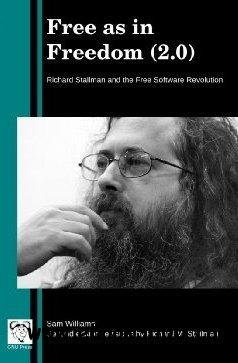
Free as in Freedom (2.0): Richard Stallman and the Free Software Revolution
102 Visitas | 278 Descargas | 2013-10-03 04:29:21 | rmartinez
In 2002, Sam Williams wrote Free as in Freedom, a biography of Richard M. Stallman. In its epilogue, Williams expressed hope that choosing to distribute his book under the GNU Free Documentation License would enable and encourage others to share corrections and their own perspectives through modifications to his work. Free as in Freedom (2.0) is Stallman's revision of the original biography. While preserving Williams's viewpoint, it includes factual corrections and extensive new commentary by Stallman, as well as new prefaces by both authors written for the occasion. It is a rare kind of biography, where the reader has the benefit of both the biographer's original words and the subject's response
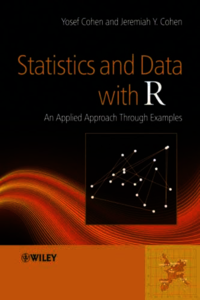
Statistics and Data with R. An applied approach through examples
147 Visitas | 202 Descargas | 2013-10-29 21:40:59 | rmartinez
The book is intended for students, researchers and practitioners both in and out of academia. However, no prior knowledge of statistics is assumed. Consequently, the presentation moves from very basic (but not simple) to sophisticated. Even if you know statistics and R, you may find the many many examples with a variety of real world data, graphics and analyses useful. You may use the book as a reference and, to that end, we include two extensive indices. The book includes (almost) parallel discussions of analyses with the normal density, proportions (binomial), counts (Poisson) and bootstrap methods.
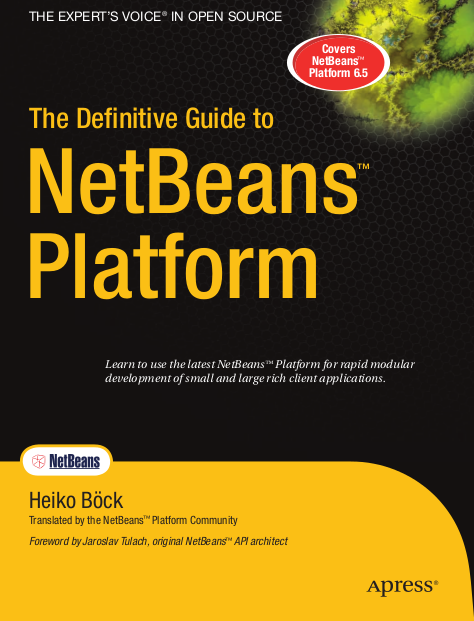
The Definitive Guide to NetBeans Platform 6.5
132 Visitas | 202 Descargas | 2013-11-05 02:54:08 | rmartinez
O ver the past several years, rich client desktop platforms have gradually increased in popu- larity. Leading this trend have been the NetBeans Platform and the Eclipse RCP. The popularization of these desktop platforms has been primarily driven by their related IDEs, which are based on these platforms, providing tools for applications developed on top of their infrastructures. While the Eclipse RCP bases itself, via SWT and JFace, on homegrown idioms and concepts, the NetBeans Platform relies completely on the standard Java APIs, via AWT and Swing, fully integrating the official concepts of the Java Standard Edition.
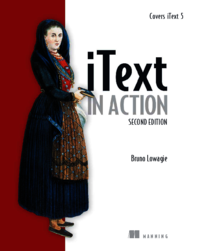
iText in Action. Second Edition.
Manejo de PDF en Java.
119 Visitas | 154 Descargas | 2013-11-14 18:44:59 | rmartinez
This book will teach you about PDF, Adobe’s Portable Document Format, from a Java developer’s point of view. You’ll learn how to use iText in a Java/J2EE application to produce and manipulate PDF documents. Along the way, you’ll become acquainted with interesting PDF features and discover e-document functionality you may not have known about before. Today, iText is the world’s leading F/OSS PDF library. It’s released under the Affero General Public License (AGPL) and is available in two versions: the original Java version, and the C# port, iTextSharp. These libraries make it possible for you to enhance applications with dynamic PDF solutions.
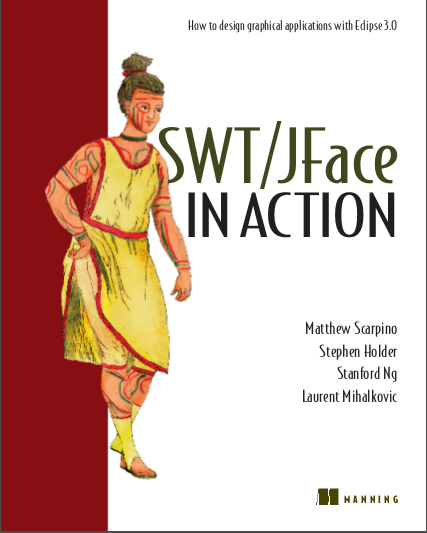
SWT/JFace in Action. GUI Design with Eclipse 3.0.
93 Visitas | 164 Descargas | 2013-11-19 03:07:29 | rmartinez
This book is written with the intermediate to advanced Java programmer in mind. We assume that you’re familiar with the basics of Java syntax and comfortable con- sidering design alternatives where there may not be a single choice that is supe- rior in all situations. Having some experience with developing graphical applications, whether in Java or any other language, will be helpful but isn’t necessary. We define all terms as they’re introduced and attempt to point out the purpose behind each widget as well as discuss the technical details of how to use it. However, this isn’t a book about user interface design, so we won’t attempt to cover the myriad details that go into assembling a compelling user experience out of the widgets we present. We assume that most readers have some experience with Swing, but such expe- rience isn’t necessary to fully enjoy this book. We attempt to draw comparisons to Swing where we feel that doing so imparts additional understanding for Swing vet- erans, but these comparisons are secondary to the main discussion of each topic. We have made sure you can understand every topic in this book without having programmed a single line of Swing code.

Phonology and Phonetics
107 Visitas | 119 Descargas | 2013-11-20 21:55:00 | rmartinez
Language is intimately tied to man’s thought, feelings, and activity. A language is part of the culture of a people and the chief means by which the members of a society communicate. Language is studied by many branches of learning: linguistics, psychology, anthropology, education, to mention a few. Linguistics, the science that analyzes, describes, and classifies language, is divided into different branches. One of these is phonology, which studies the sound system of a language. Since language is an oral process, accurate pronunciation, that is the mastery of the sound system, is a prerequisite to complete mastery of the language. Pronunciation is a dual process, because it involves no only the ability to recognize the significant sounds of the language, but also the ability to produce these sounds with accuracy.
Contribuir
Usted puede contribuir con Libros UCLV, es importante para nosotros su aporte..
Contribuir